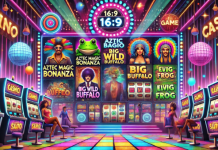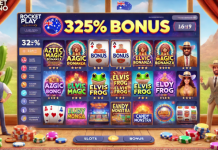Over recent years, mobile gaming has undergone a remarkable transformation, having transcended its roots as nothing more than a simple pastime to becoming a powerful tool for both personal development and professional training too. From immersive simulations to brain-teasing puzzles, mobile gaming makes up a diverse landscape, and they offer something for everyone. However, possible the most surprising evolution lies in the integration of mobile gaming into serious training regiments across a plethora of different domains. This includes fitness, sports, education and so much more.
Indeed, the biggest change in the way in which mobile gaming has transformed over recent years is the way in which it’s been viewed – that is, most of all, the potential that’s been identified within mobile gaming. Mobile gaming uses technology that has been in existence for a fair amount of time now, but more recently, its value has been identified more seriously.
Stick around while we explore this transformation of mobile gaming. We’re going to dive into the way in which mobile gaming has completely evolved from a casual pastime, perhaps even a distraction, to a serious training tool that has the potential to revolutionise the way in which we can learn, improve and excel in our endeavours.
The Rise of Mobile Gaming
As we mentioned, mobile gaming isn’t exactly a new technology – it burst onto the scene in the early 2000s with the advent of smartphones. Indeed, it offered an accessible and convenient form of entertainment for users to enjoy while they were on the go. Essentially, in the early years, this was pretty much the extent of what mobile gaming was and what it was going to be.
As the years went on, games like “Candy Crush Saga” and “Angry Birds” quickly captured the public’s attention and imagination, as did games like those available at Grand Eagle. This showcased the potential of mobile devices as gaming platforms. However, even though mobile gaming was increasing in terms of popularity during this period, it was still largely seen as a casual pastime rather than anything more substantial.
Expanding Possibilities: Gaming and Skill Development
The increasing possibilities for mobile gaming have come as a result of several factors, including change and innovations in technology as well as differing needs of players and consumers. As a result, games began to incorporate elements of skill-building, education and strategy, meaning that for the first tie, the lines between leisure and learning were becoming increasingly blurred.
There are many mobile games that exemplify this blurring of lines, including apps like “Duolingo”. Duolingo has transformed the process of learning new languages into more of a game, introducing aspects of competition and rewards to help make it more enjoyable and more incentivised than ever before. Furthermore, Duolingo, for instance, is something that be enjoyed by players of all ages.
Similarly, “Lumosity” is an example of a brain-training type of game that has started the work of challenging players with cognitive exercises that are designed to train and improve attention, memory and problem-solving skills.
Sport and Fitness Meet Mobile Gaming
One of the biggest and most significant develops in the evolution of mobile gaming is its integration into sports and fitness training. Over recent years, mobile gaming has evolved into mobile applications, and these days, there’s pretty much an app for everything and anything you may want to do. Now, that includes sports and fitness training.
With the proliferation of fitness apps, users are no able to turn their smartphones into personal trainers, allowing them to be guided through customised workouts and track their progress over time. Furthermore, these fitness-focused mobile games have emerged as effective tools for enhancing physical fitness and sports performance.
Serious Training by Means of Gamification
Gamification, which is the application of game design principles to non-gaming contexts, is at the heart of the transformation of mobile gaming into a serious training tool. This has been accomplished by means of introducing elements such as social interaction, goal setting and progress tracking. As a result, developers have managed to create fitness applications and games that are able to motivate users to stay active, achieve their health goals and set personal records.
Of course, some games and applications incorporate more elements of classic gaming than others. A good example of that is “Zombies, Run!”. This game combines immersive storytelling with interval training, challenging users t outrun zombies in a post-apocalyptic world while completing real-world runs. It managed to add an additional form of entertainment to an activity that would previously have been solely fitness focused.
Strategy Games and Sports Simulation
It’s not only straight-forward fitness focused applications that have been part of the transformation of mobile gaming. Mobile gaming has also made inroads into the realm of sports simulation and strategy games, especially with the likes of “FIFA Mobile” and “NBA 2K Mobile Basketball”. Games like this have brought the excitement of professional sports to the fingertips of ordinary people, allowing them to compete in tournaments, manage tams and experience the thrill of victory.
What’s interesting about these games is that they provide elements of not only entertainment, but they also introduce strategy and tactics, making them useful training tools for athletes and coaches alike. Indeed, at the end of the day, strategy games make previously inaccessible sport more freely available to ordinary users who may otherwise never have had a chance to experience them in any way. Now, these games can be used by amateurs for entertainment or training, as well as by professional athletes as a serious training strategy.
Professional Development and Education
Mobile gaming has also found applications in education and professional development, allowing it goes far beyond sports, fitness, and entertainment. It offers possibilities for interactive and engaging experiences that facilitate learning and the acquisition of skills.
Best of all, there are possibilities for education and professional development at all levels. Whether you’re looking at tools that can be used by children and teachers at a young age, or even medical students looking to hone their diagnostic skills with simulation games like “Prognosis”. On the other hand, aspiring chefs can practice their professional techniques with cheffing games like “Cooking Mama”. Essentially, at the end of the day, there are plenty of possibilities for professionals in just about any and all industries.



